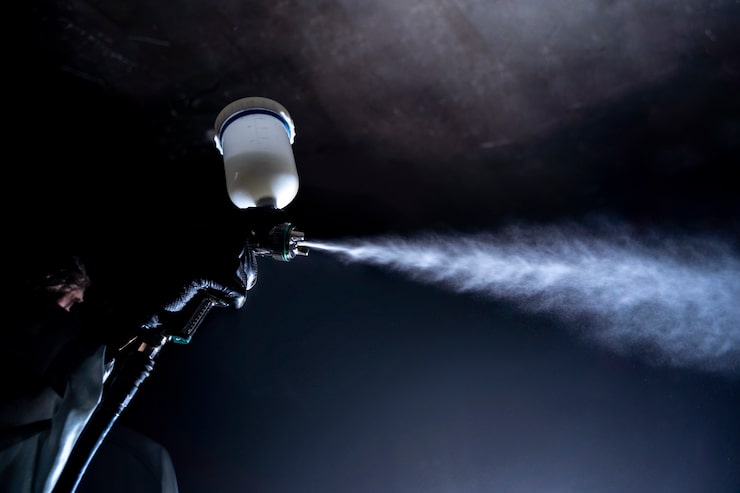When people ask “How thick is electrostatic powder coating?”, they are often looking for precise technical information that can guide their manufacturing, quality control, or design decisions. Electrostatic powder coating is a finishing process where charged powder particles are sprayed onto a grounded surface, then cured to form a solid, protective film. The thickness of this coating is an important factor because it directly affects durability, corrosion resistance, appearance, and cost. In most industrial applications, electrostatic powder coating thickness typically ranges from 50 to 150 microns, although certain specialized coatings may be applied thinner or thicker depending on performance requirements.

The thickness of electrostatic powder coating is determined by multiple variables. Coating type plays a big role—epoxy, polyester, polyurethane, and hybrid powders may have slightly different recommended thickness ranges for optimal performance. Application technique also matters; electrostatic spray guns, fluidized beds, and multi-pass coating methods can all influence final thickness. The geometry of the substrate—whether it has deep recesses, sharp edges, or flat surfaces—affects how evenly the powder deposits and how thick it becomes in certain areas. Even the skill of the operator impacts the outcome, since controlling the spray distance, angle, and movement speed is critical for uniformity.
From a performance perspective, thickness is crucial for durability. A coating that is too thin may leave areas of the substrate underprotected, leading to premature corrosion or wear. On the other hand, excessive thickness can lead to issues such as orange peel texture, reduced adhesion, or cracking during thermal expansion and contraction. In many architectural, automotive, and industrial standards, there are specific thickness requirements to ensure the coating passes durability tests, such as salt spray resistance, UV exposure, and abrasion cycles.
Measurement methods for electrostatic powder coating thickness fall into two main categories: non-destructive testing and destructive testing. Non-destructive testing uses tools like magnetic induction or eddy current gauges to quickly measure coating thickness without damaging the part. These are common in production lines and quality control processes. Destructive methods involve cutting through the coating and examining the cross-section under a microscope, which provides extremely accurate results but is only used for sampling and research purposes.
Different industries may have different target thicknesses based on performance needs. For example, outdoor furniture and architectural aluminum profiles often receive coatings around 60–80 microns to balance weather resistance and cost efficiency. Heavy-duty machinery parts or marine applications might use coatings 100–150 microns thick for added corrosion protection. In some cases, functional coatings—such as those used for chemical resistance—may exceed 200 microns, but these require careful application to avoid adhesion problems.
Environmental conditions also influence the choice of thickness. In coastal or high-humidity regions, thicker coatings may be preferred to withstand constant exposure to salt and moisture. In high-UV environments, a stable thickness combined with UV-resistant powder is necessary to prevent chalking or fading over time. Indoor products, by contrast, may use thinner coatings to reduce material usage while still achieving sufficient protection.
From a cost and efficiency standpoint, thickness must be optimized rather than maximized. Powder is relatively expensive compared to some liquid coatings, so over-application directly increases costs. Additionally, excessive coating thickness can require longer curing times, raising energy consumption and slowing production throughput. Manufacturers often aim for the minimum thickness that meets performance standards, balancing protection, aesthetics, and budget.
Another consideration is coating uniformity. Electrostatic powder coating tends to deposit more heavily on edges and corners, a phenomenon called the “Faraday cage effect” in recessed areas, which can cause uneven thickness distribution. Skilled operators and properly adjusted equipment can minimize this, ensuring both thin and thick areas stay within acceptable tolerance. Uniformity is particularly important when parts must fit together precisely, as thick coatings can interfere with assembly.
In appearance and texture, thickness also plays a role. Thicker coatings can produce a smoother surface by filling minor imperfections, but too much thickness can exaggerate surface defects or create uneven gloss. Certain finishes—such as fine texture, wrinkle, or metallic effects—may require slightly different thickness targets to achieve the intended visual quality without compromising adhesion.
Ultimately, the answer to “How thick is electrostatic powder coating?” depends on the specific powder type, application method, environmental exposure, and performance requirements. While the general industry range is 50–150 microns, exact specifications should be guided by material suppliers, industry standards such as ISO or ASTM, and the intended use of the product. By carefully selecting and controlling thickness, manufacturers can ensure optimal durability, visual appeal, and cost-effectiveness in their powder coating processes.


